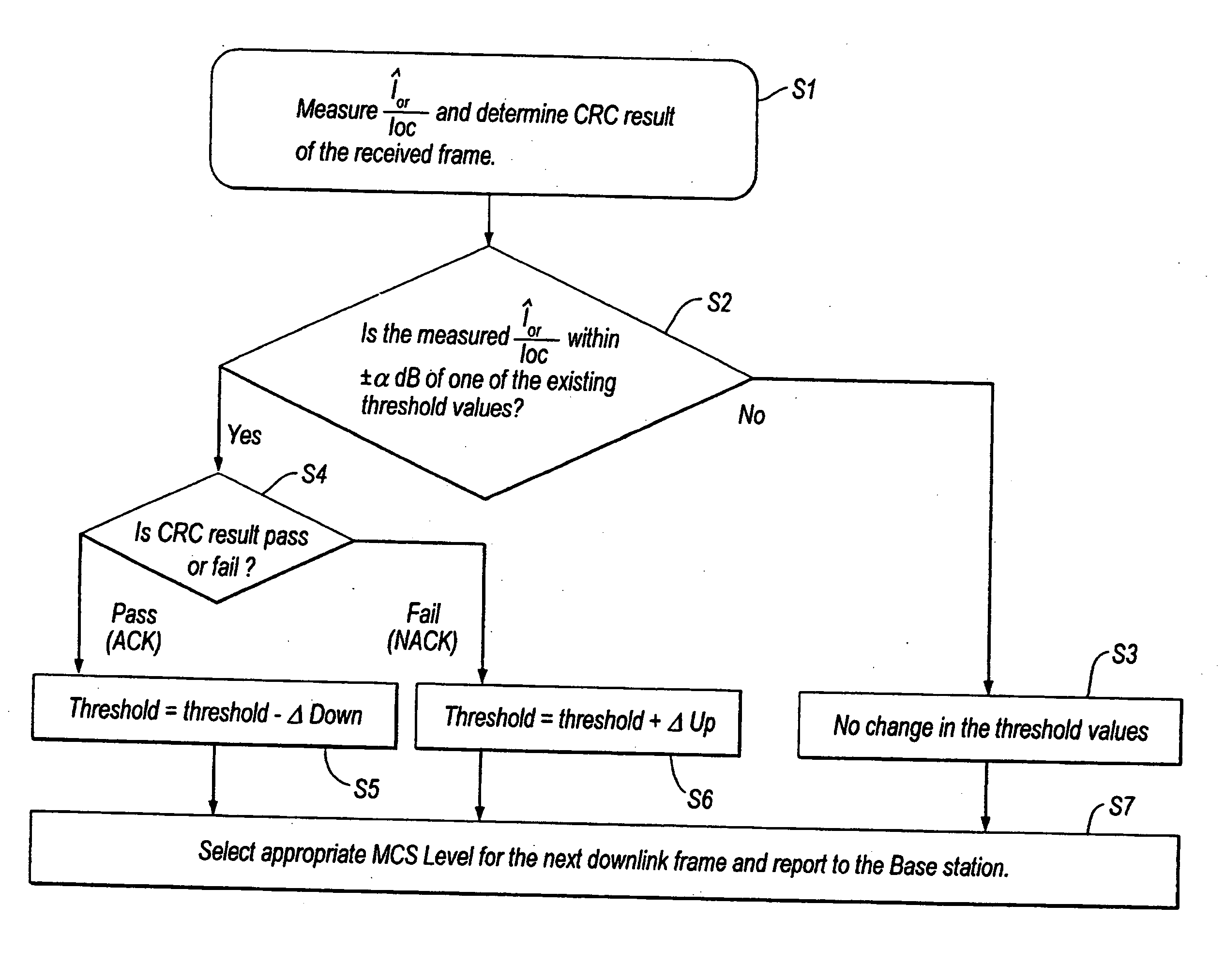Adaptive modulation and coding
a technology applied in the field of adaptive modulation and coding methods and apparatuses, can solve the problems of poor performance at lower mcs levels and does not provide a satisfactory solution, and achieve the effect of lowering the target error ra
- Summary
- Abstract
- Description
- Claims
- Application Information
AI Technical Summary
Benefits of technology
Problems solved by technology
Method used
Image
Examples
Embodiment Construction
[0068]FIG. 8 is a flowchart for use in explaining an AMCS method according to a first embodiment of the present invention. In this embodiment, the UE selects the appropriate MCS level for each frame of the downlink signal and reports the selected level to the base station.
[0069] In this example, the method is used to adapt the MCS level of a downlink packet access signal in an HSDPA system.
[0070]FIG. 9 is a schematic view for explaining signalling in the first embodiment.
[0071] For downlink signalling, four channels are used. A common pilot channel (CPICH) is used to broadcast a signal to all UEs in the cell served by the base station, in order to enable each UE to measure a downlink channel quality based on the CPICH signal. A high-speed downlink shared channel HS-DSCH is used to transmit packet data to a UE. A high-speed shared control channel HS-SCCH is used to carry transport format and resource related information (TFIR). This TFIR is, for example, 8 bits and includes inform...
PUM
 Login to View More
Login to View More Abstract
Description
Claims
Application Information
 Login to View More
Login to View More - R&D
- Intellectual Property
- Life Sciences
- Materials
- Tech Scout
- Unparalleled Data Quality
- Higher Quality Content
- 60% Fewer Hallucinations
Browse by: Latest US Patents, China's latest patents, Technical Efficacy Thesaurus, Application Domain, Technology Topic, Popular Technical Reports.
© 2025 PatSnap. All rights reserved.Legal|Privacy policy|Modern Slavery Act Transparency Statement|Sitemap|About US| Contact US: help@patsnap.com



